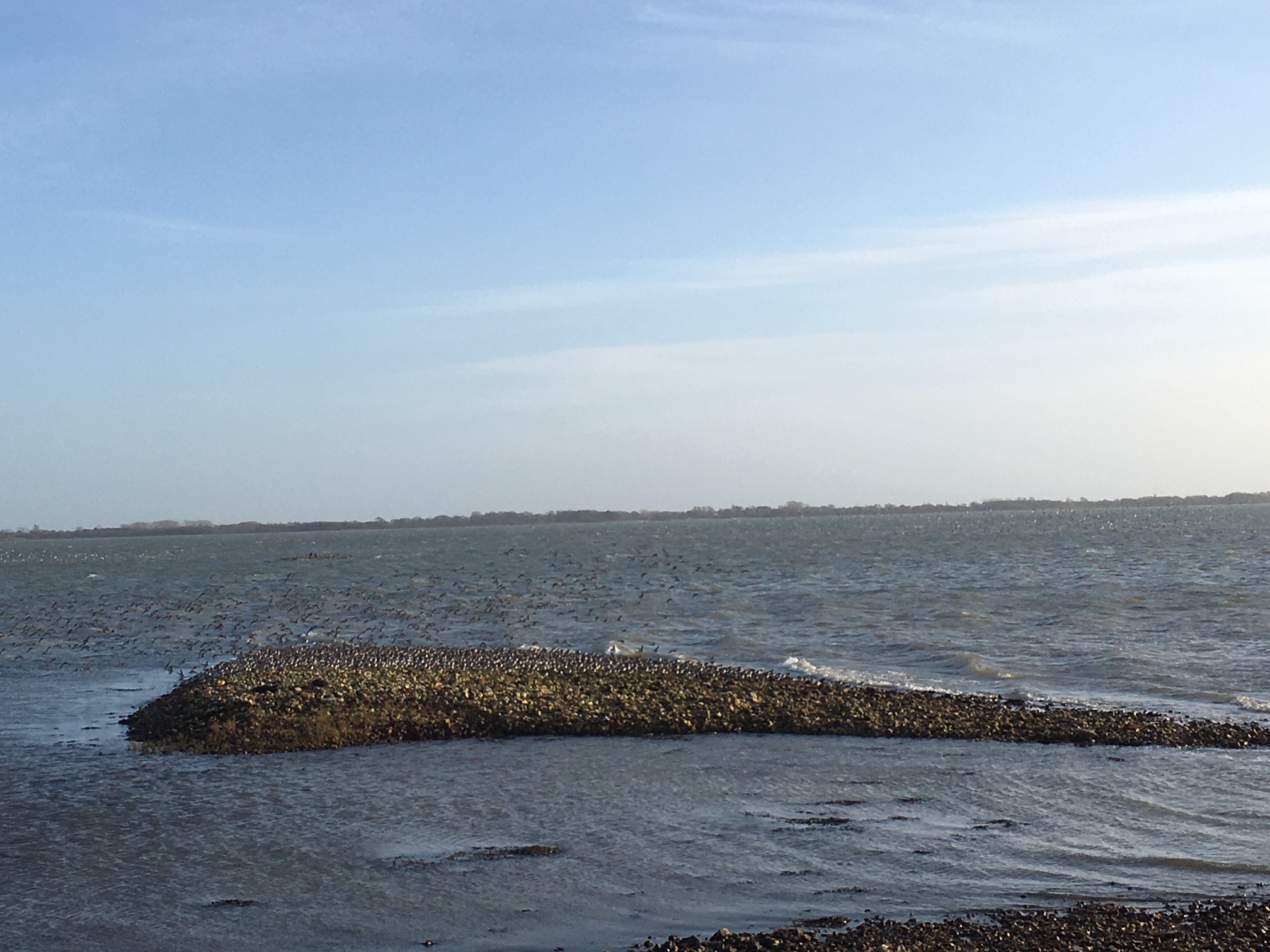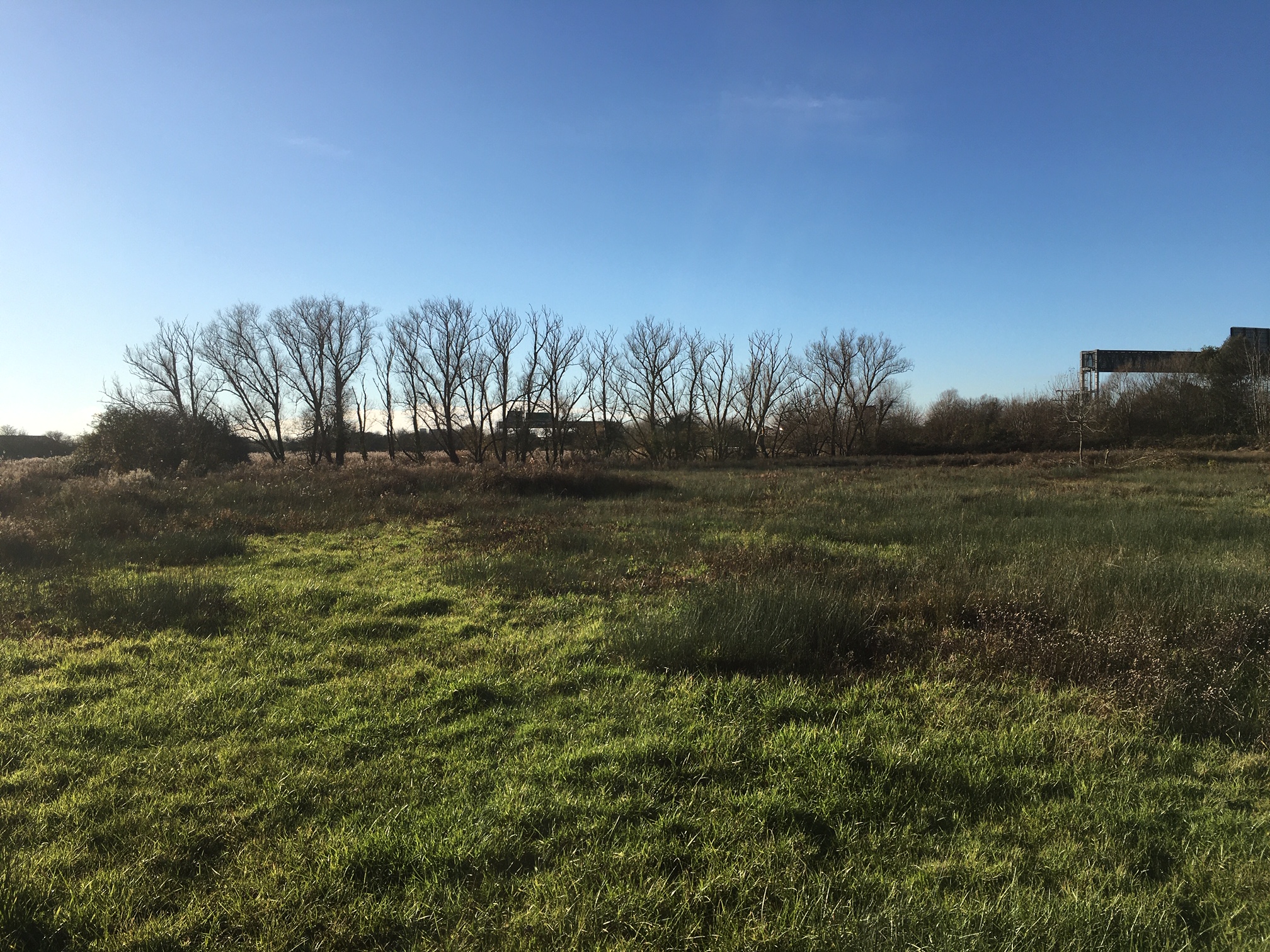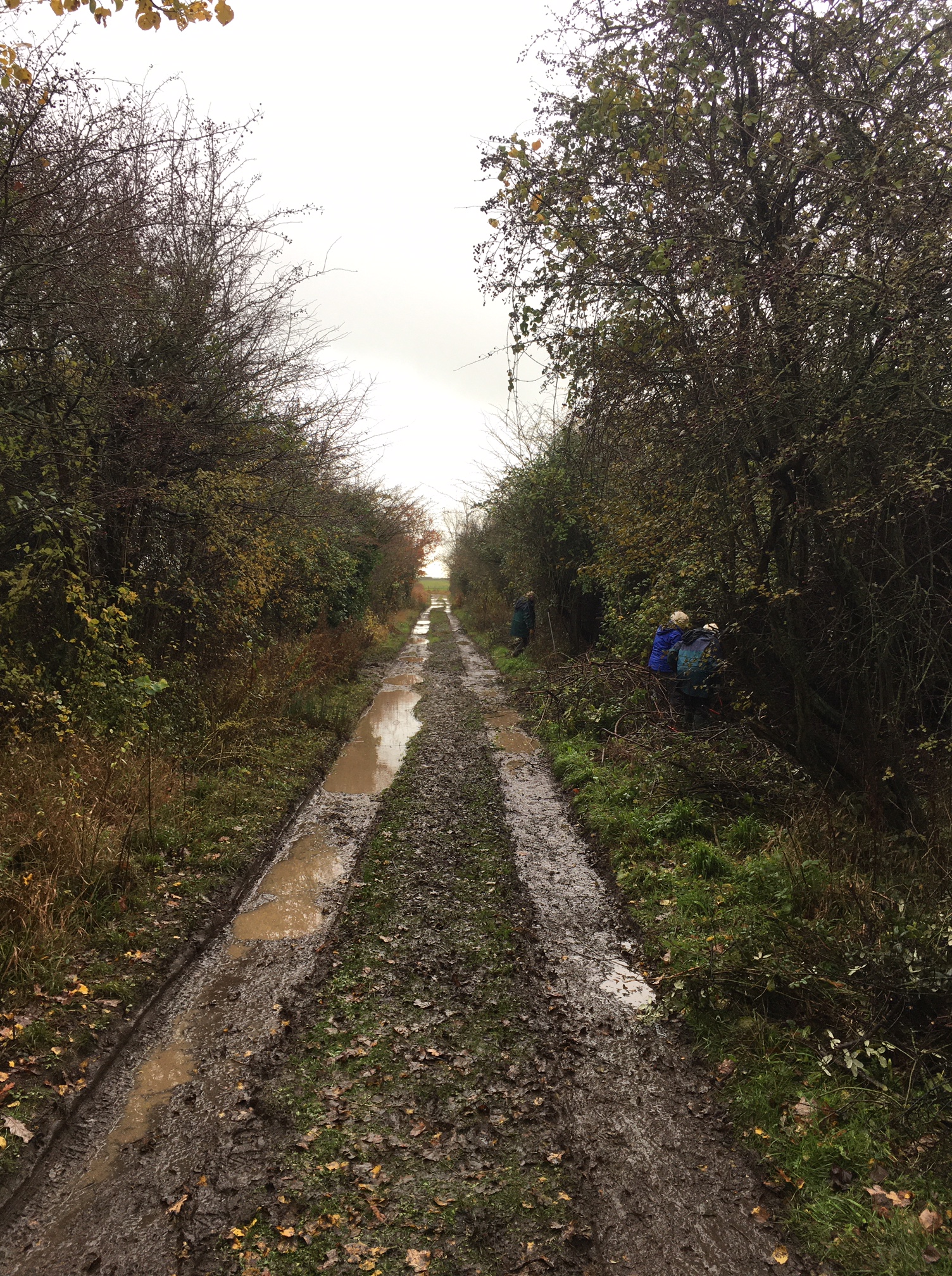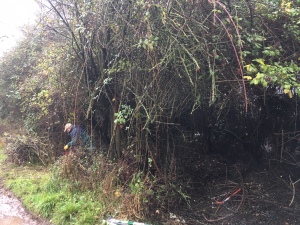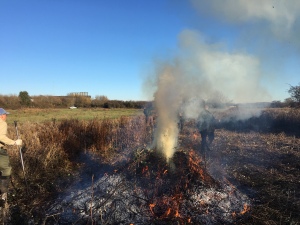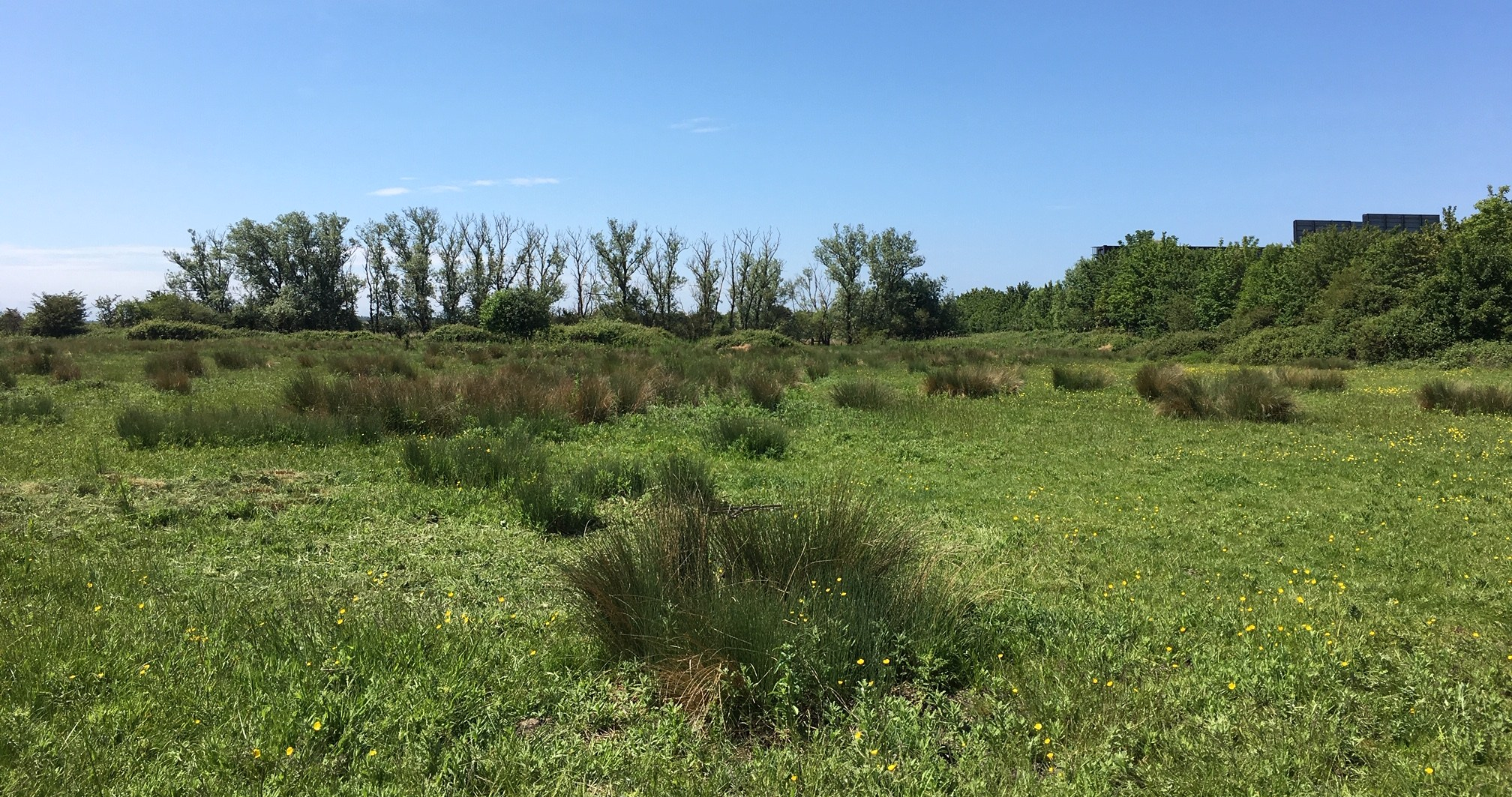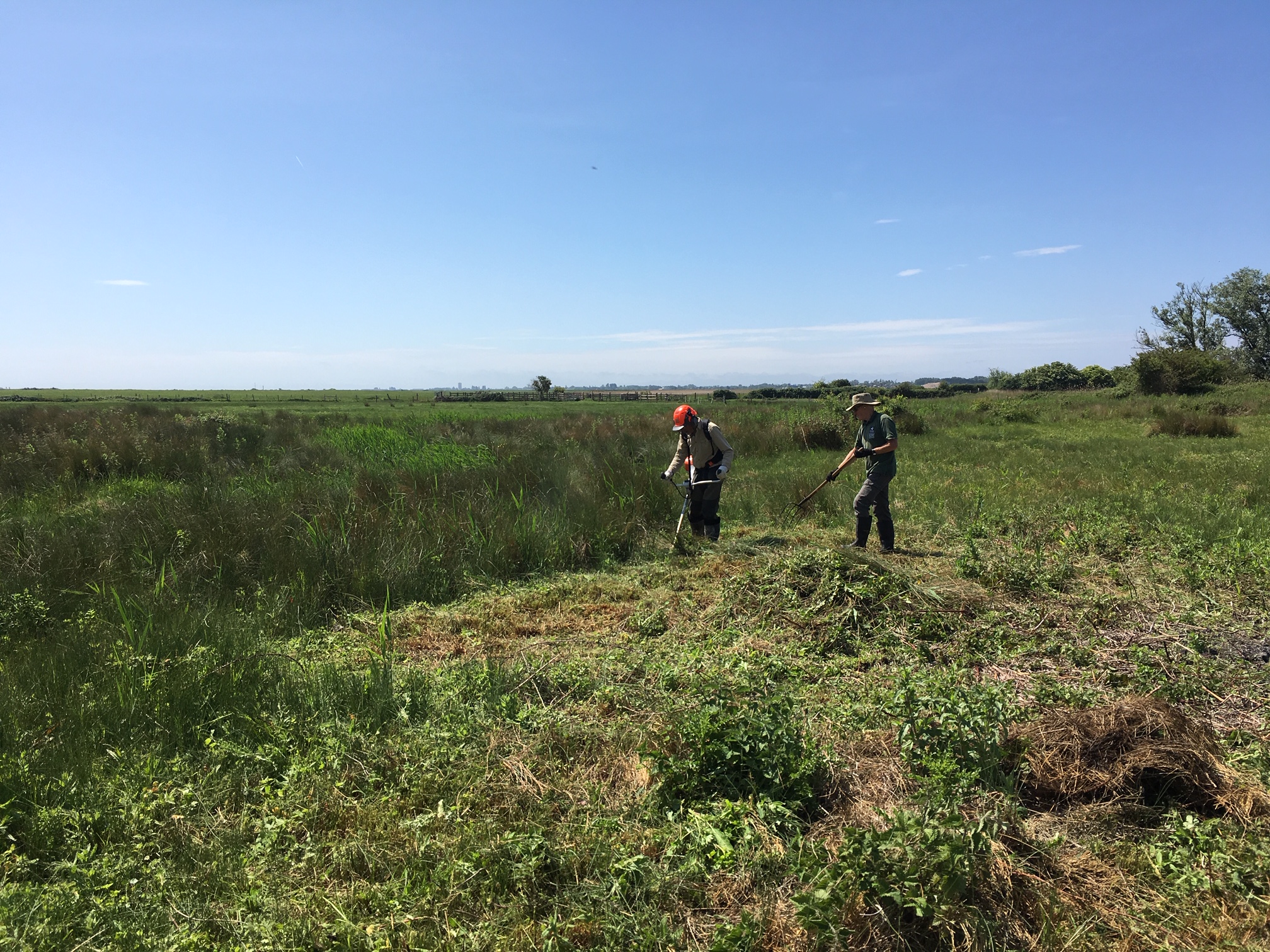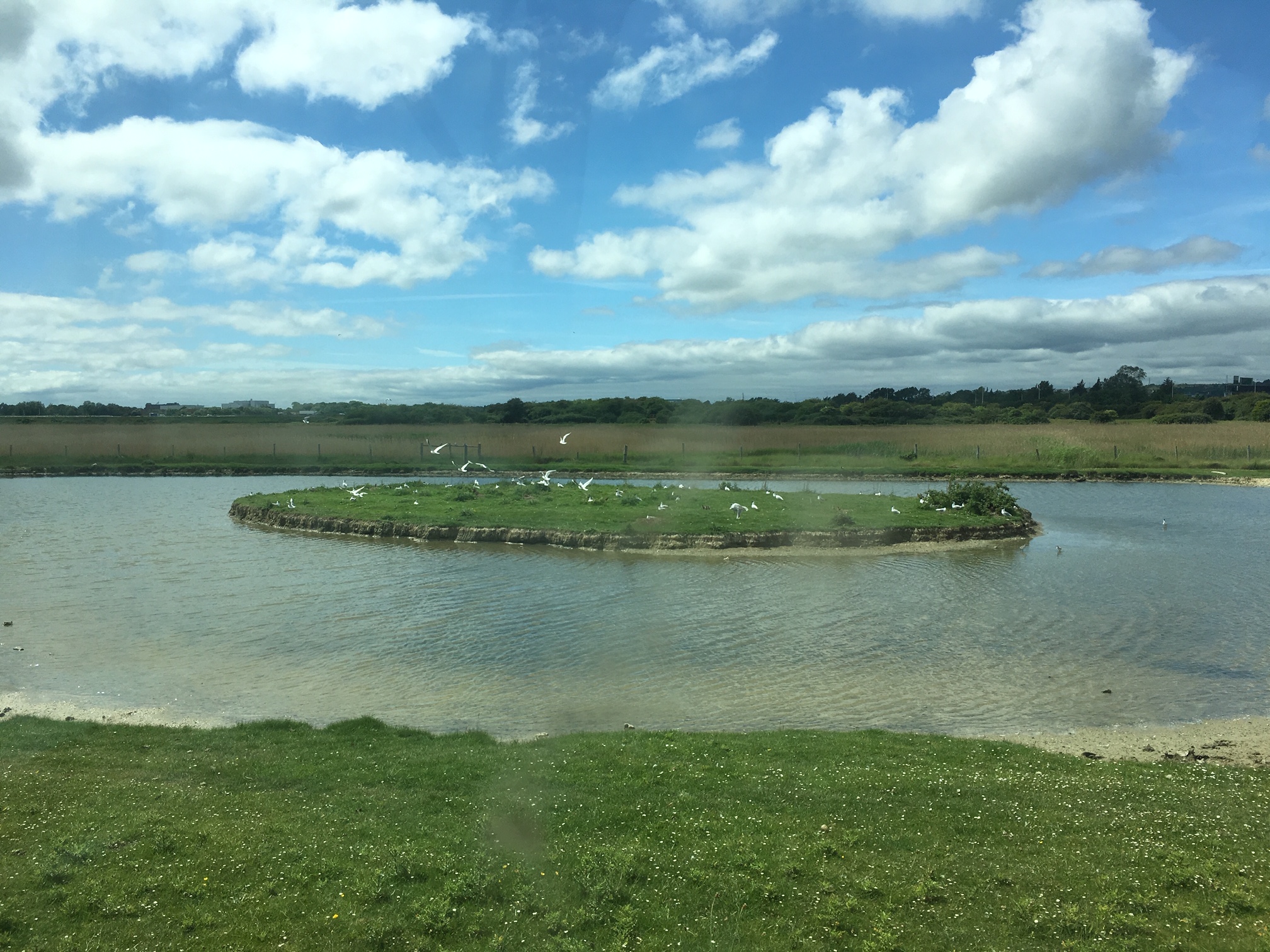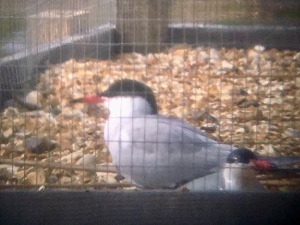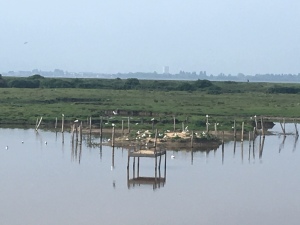
Five years ago I became a Reserve Officer for the wildlife Trust, covering the Solent area. This primarily covered a coastal theme, specifically coastal grazing marsh. I had come from a background of woodlands and heaths, something still close to my heart. I was however taken under the spell of coastal management, especially wader and seabird management and I thought that I would write soemthing on this, covering what I have learned over the last half a decade of trial and error, research, criticisim and praise. It is, I believe, one of the most complex and intensive forms of management, almost wholy artificial in an environmenet no longer suitable to the birds that were once common throughout our countryside. Gone are the years of seeing lapwing and redshank in farmland and now are the times of eletric fences and heavily protected reserves. Something that must dramtically change. however, in the mean time, this is how we do it.
Waders, what they like.
Waders are birds we quite often think about in the winter, when our harbours on the south coast, and indeed across the country, fill with an array of species and this does indeed fill my thoughts through the autumn, making sure that the sites are in tip top condtion for the birds when they arrive. My obsession though has become breeding waders, in particualer lapwing, redshank and avocet, the birds that we get on our reserves and the more comon southern coast breeders. The process in getting the appropriate conditions is complicated as all birds like something a little different.
Lapwing like big open spaces. The better the view, the more likely they will settle down. This means no scrub, no long grass and especially no trees. Lapwing like to see their predators approaching from a long way off as their primary method of protection for their eggs and chicks is to divebomb potential threats, deterring them from an easy meal. They are excellent parents and do well in loose groups where the mobbing effect is greater. So the more lapwing you have, the greater the fledging rate is likely to be (though not always as I shall explain later). They will often nest on a small raised area for maximum visibilty, with their nests no more than a scrape in the ground.
Redshank like a slightly longer sward, with a mix of long and short areas. Their nests will be in a tussock of rush or long grass and rely a bit more on camouflage. They still prefer a more open landscape, so no scrub or trees. Rush pasture is ideal with tussock clumps dotted around at loose intervals.
Avocets, on our reserves at least, almost exclusively nest adjacent to water, needing open spaces and good areas of flooded pools and muddy margined water bodies. The chicks will feed on these exclusively unlike the other two species which will venture far into the middle of the marsh.
In all species there is a preferance for wet areas. Birds will breed near to these or bring their chicks to them once mobile. Lapwings will traverse a significant distance and multiple obstacles, dragging their chicks through hedgerows and over roads to get them to suitable foraging areas. Wet areas should be shallow to allow for the waders to walk around the edges but will require a depth suitable to hold water until at least July and the end of the key breeding time. It can last longer as all species will attempt up to three times if they fail at the egg stage initially, pushing the eventual fledging rate back until later in the summer.
Wet areas on nature reserves tend to come in the form of specific wader scrapes or shallow ditches or food drains that are either connected to waterbodies or can be filled artificially.
You tend to need a variety of areas not only to suite the nesting requierments of all the wader species but also their chicks foraging behaviour. This usually means splitting the reserve up into specific areas.
Once the chicks are mobile, ideally the habitat needed will be a mixture of either topographical or vegatative feautures allowing the chicks to hide when predators approach. This may be in the form of a varying sward height, tussock patches or hoof prints from cattle or the edge of a scrape that has been walked in.
In a farmland setting lapwing will nest in an arable field and once hatched will take their offspring perhaps several hundred metres into areas of grassland where they can then feed, often staying close to feautres like hedges that they once spurned during the nesting phase.
These are obviously over simplicfications and they are adaptable species. Like many species, they will not follow the text book example and you may find them in habitat that you would not expect. On the whole though, what I have described generally attrats these species.
The problems
predators, climate change, dryness, grass growth, trampling
There has been a great deal of work done on the dramatic decline of waders. Within the wider countryside intensive farming practices, especially over the key breeding time has contributed massively to the cataclysmic decline in these species. Across the board, waders have plummeted in their breeding range, they just don’t get enough chicks to survive to adulthood. The use of pesticides and the effect on the food source of these birds is also a huge contributer. For the populations to rise, this need ot be addressed and it needs to be addressed quickly. Within nature reserves though, this is not necessarily the case and the issues I shall be referring to are focused on areas of land, specifcally targeted for wader breeding.
Predators form one of the biggest threats to breeding wader populations, primarily foxes. They are very good at nest finding and you will find that certain individuals become more adept at it than others. If you have a fox like this on your site you may not produce many, if any, fledged young in a season.
The game and wildlfie conservancy did some very interesting work on gps tagging foxes. The range of movement within a population is huge and animals may travel large distances over the course of a night. If your site is right in the middle of the countryside, you may draw foxes in from a large radius. The issue that you have is that the reserves are indeed a draw as often they are great food resources for a range of predators.
Corvids are problematic as well. Crows, magpies and more recently ravens can be catrastrophic to your breeding birds. Crows are fantastic at finding nests and like foxes, you may get a pair that are particulalry good at it. They are mostly a threat at the egg stage and can often be seen sat on a fence post with a good overview, watching and working out where the nests are. All corvids are too clever for their own good! Ravens are a different kettle of fish as they are massive and will easily take a chick or two as a mouthful. I had a year at Farlington where we had almlost complete failure and mostly down to Ravens. There was rarely a time that I would go down and not see a raven with a lapwing chick.
Around April or the start of MLay, I will often get 30 plus crows on Farlington Marshes. It is always a worry but once a breeding pairs get establshed, these often disperse and you are left with one or two pairs that set up a nest. This is when you need to establish whether they are good nest finders or not. Good ones need to be taken care of, less compitent ones can be left.
Other avian predarors can be issues as well. Buzzards, red kites, peregrine falcons, large gulls can all have huge impacts on you colonies but are difficult to deal with without specic licences from Natural England. It is also something that we would not consider doing.
Predators are not the only issue though. Climate forms a major component in chick mortality. Periods of unseasonable cold weather in the spring can cause death through exposure. This is obviously out of the control of any site manager, however if the grass is long and wet and cold weather insues, the chicks will more likely die as they cannot dry out due to constanly becoming wet in the long grass. Chick down is not waterproof. This can happen in unseasably wet weaether as well for the same reasons. There is only so much time in which the adults can shelter fluffy and absorbant chicks.
What is more likely the issue nowadays is the opposite end of the spectrum, very hot and very dry springs. 2019 and 2020 have both seen extremely hot and arid condition from april onwards. 2021 seems to have followed suite partially as it has been very dry but contrary to other years, very cold. This dry weather means that the water bodies that require the prime foraging areas do not last into the breeding season. It also means that vegetation growth rockets and can easily get away from you if not careful, making conditions unsuitble for birds that wish to retry after a failed brood or for the current chicks.
The growth can be counteracted by the addition of grazing animals, usually cattle. This brings issues in itself through trampling. There is a high mortality rate at egg stage through trampling and stocking densities need to be kept low at the early stages. Preferably no livestock should be present early on. Once chicks appear, cattle can be introduced in low numbers. They do introduce a food source through their dung but significant enphasis should be made on the banning of invermectin wormers and preferably any wormers on site. This can often be a bone of contention with graziers and has to be delicatly traversed. Bringing animals on in late may, in low densities, is the best move as grass will soon get away from you in hot, wet weather.
Getting the habitat suitable is a battle every year as you are constantly working against a changing climate. One never knows what the year will throw at you any more. You may get arid conditions all summer, leaving a short sward but get a very wet and warm autumn, leaving the grass to go crazy just as you are drawing down cattle numbers. If the summer is wet and hot, you may struggle to get on top pof the grass growth with the number of livestock available to you.
Weeds can be a big problem in your sward. Given certain conditions or lack of management things like rush or creeping thistle can become abundant and make the sward less favourable to breeding waders as well as overwintering wildfowl. It is important to manage these at the approapriate times
Management processes
ehat aiming for, sward height, short areas around water bodies. ditching
The key for your summer management is to get a sward of suitable height ready for october and the end of the growing season. Generally the temperature drops below 10 degrees at this point and everything stops growing. This can often not be the case so you may need to adjust management to correspond. If you have geese on site, like we do on the south coast, the target length will be around 5cm which is nibble height for brent geese. Grazing is then continued through the winter by these birds, prducing a great sward, sometimes almost bowling green like.
Every year will require mechanicaly control, either of weeds or to manipulate sward length. This usually means by tractor and topping but may also be by handaround areas unsuitable for vehicles.
The cycle, a look at Farlington Marshes
Through the season this is how we manage Farlington Marshes to produce the conditions we need.
April cattle come on in low numbers. The grazier will be keen to get cows out so you have to manage that. I tend to stick them in areas where I know that there won’t be birds on nests. If you have had a very mild winter and early spring, grass growth may be going crazy, or if you did not achieve a short sward before winter you may have longer grass than desired. In this case a low density stocking will be necessary. I sometimes put on 15 or so cattle onto the main marsh at this time if needed. The main marsh is around 80 hectares so you can see it is quite low. Ideally we allow the cows to arrive in a seperate compartment, allow them a few days to calm down and see how skittish they are. Once calm, they are moved into the marsh where they are less likely to just charge around. Ideally older cattle are better as they are less excitable.
Stocking densities are kept low with cattle built up in areas where breeding birds are less likely. Come the end of May, the cattle numbers are increased, peaking around July when we have approximately 100 on the marsh and around 140 on site in total. This generally allows for adequat grazing across all areas to achieve the desired sward length for winter.
I’ve never found that grazing alone can do the best job. We have also sufffered from a huge quantity of creeping thistle in the past so mechanical control has always been necessary. About July / August we start topping. You want to top just as the thistle is coming into flower, that way it has used much of its stored reserves and will do a better job of suppressing it for the coming years. Given a very wet and warm summer you may need to top more than once.
The main use of topping in my mind, apart from the weed control, is to produce a short sward for autumn with fresh shoots just popping up at the end. So ideally in september, given good weather, a fresh growth of lovely green grass should be coming up at no more than a few centermeters length. Ideal for nibbling brent geese.
The key with topping is to allow some areas to remain un-topped. We leave a whole strip down the western edge of the marsh and patches throughout, hard topping the key feeding areas that we know the geese like. The un-topped areas remain slightly rougher and provide good habitat for young chicks to hide in. The longer areas also provide good cover for voles and other small mamamals and attract the foxes. It is therefore good to cultivate areas of long ranker grassland in areas away from the primary wader breeding sites which occupy foxes.The slightly longer areas, especially around the ditches and other water bodies allow suitable habitat for redshank and generally you find these on the periphery of the main marsh area, where we don’t top as intensively.
Once winter has arrived and the temperature drops, the sward stops growing. Hopefully at this point you have achieved the perfect height of 2 – 5cm. The geese then steadily build up, peaking around early January for Farlington. They then graze the marsh very heavily, along with other species such as widgeon. By March, this has generally resulted in a very short sward, providing an ideal nesting habitat for lapwing.
It is, in some ways, a perfect cycle where we provide a food source for one species which in turn provided the nesting requirements for another. It is never the same each year and stocking densities and topping regimes have to be constantly adapted. There is also the problem of time management for busy reserve teams who have more than one site to manage. Throw in global pandemics and other unforseen issues and you can easily get behind on management
Predator control – perching points, diversionary feeding active cotrol topping grazing etc.
Predator control is a key feature of any wader reserve. There are many options for all proplem species and many are not as palatable as others. It is highly important that you address the issues of predators though, as to fail to is to give little hope for any productivty. A single fox may work its way through all your nests in a couple of nights. Outlined are a few methods that have been adopted accross many reserves.
Foxes
Lethal control is the main option here. As mentioned, foxes are the primary reason for nest failure and as such need to be addressed. You can successfully control foxes by shooting them but in an open countryside landscape, you will pull foxes into the vacuum created which means, through the key breeding season you need to remain vigilant. On coastal sites, the reserve may be easier to protect with migration only avialable from a limited area, reducing the influx of foxes. This means that control can be undertaken pre breeding season and then fox numbers are low or non existant throug the key times.
More and more common now is the use of electric fencing or predator control fencing. The latter tends to be permanet and substantial, often dug in and angles at the top to dissuade foxes from clambering over. I have seen both options and both are effecteve, though labour intensive and costly. For areas where you know waders will breed year on year, lagoons with islands for example, predator fencing is a fantastic way to boost productivity and should be considered where financially possible.
In areas where waders breed in different spots year on years, mobile electic fencing is great. You have to make an eductated guess as to where you set it up but I have seen it used effectively on many reserves. It is cheaper and allows mobility in grazing as well. It is however extremely labour intensive to set up and take down, often requiring a few days and a number of people.
If you have breeding birds on islands in lagoons, fencing around the islands within the water can be highly effective. Foxes will not swim out and then climb over the fence.
As mentioned previously you can make areas of the site away from the breding areas more attractive to mammalian predators. Allowing ranker areas of grassland on the periphery of the site will attract small mammals and other food sources for foxes and keep them occupied there.
Avian Predators
Predation from the air is something much harder to deal with. You can’t net the whole area unfortuanetly, though I have seen attempts in the past to cover nests with cages for species such as godwits, with varying results.
Your main method here is to make predation as difficult as possible. Remove all perching points around your breeding areas. This may be small shrubs or trees. We manage all out hedge rows around the perephery of the marsh area at Farlington to about waste to chest height. This retains breeding habitat for species such a linnets but does not give an elevated position for crows to perch. Fences are also issues so we place a six inch nail into the tops of every post, stopping a large bird from landing on them.
One of the most effective stategies that I have adopted is that of diversionary feeding. We have a table approximately six foot off the ground that we place bait on. This often comes in the form of dead squirrels but we have also used deer and other road kill that we find. I have also used day old chicks in the past that ravens scoop up three at a time! I also disperse chicken eggs around the site in large quantities. This all seems to keep the problemetaic avian predators such as ravens at bay. I have watched a raven fly straight over some very plump lapwing chicks and head for the dead squirrel, much easier than being mobbed by angry lapwing parents.
It isn’t full proof though. You have to be aware that you may pull in more predators this way. I have seen an increase in larger gulls this year where we have been intensively feeding. Lesser black backed and herring gulls are around more which could cause issues if they get bored of squirrel. They are however occuppied for the time being and therefore it seems to be working. Certain;y somethng that must be carefully monitored.
You can use lethal control on species such as crows and magpies, though this now needs to be licenced. It is not a route that I have gone down due to the labour intesity of it and the issue with causing a vacuum. Once a breeding pair is removed, you may get many more younger birds arrive which could be more problematic.
All the others
There are a whole multitude of predators that could cause you a head ache. Hedgehogs, weasels, stoats, badgers, dogs are all predators of eggs. There is a point where you cannot really help so you just have to keep your fingers crossed.
The future
it may all seem a bit over the top but as mentioend before, if you do not go to these lengths then you are unlikely to produce many young and this is currently the key to wader recovery in the UK. More chicks are needed and more of these need to reach adulthood.
Currently this seems most likely in reserves like Farlington Marshes where land managers can work hard to get good productivity and so many teams are doing a great job. The RSPB, Hampshire County Council and Natural England are all doing fantastic work locally, knocking out chicks every year. We know how to do it and we’re all getting pretty good at it.
These reserves have a finite amount of space and we need to start thinking about where the next generations of these birds will go. It is no good prducing them but future adult birds then spreding out and failing to produce young. Local work must therefore be undertaken with farmers and land owners to produce suitable conditions for waders to thrive. This may be the addition of wet areas or just simply the change in timings of certain practices. Joining areas will be key and hopefully we can change the tide of waders in the UK. We are on the cusp, with seed sources available, we just need a push to identify areas to make a little space.





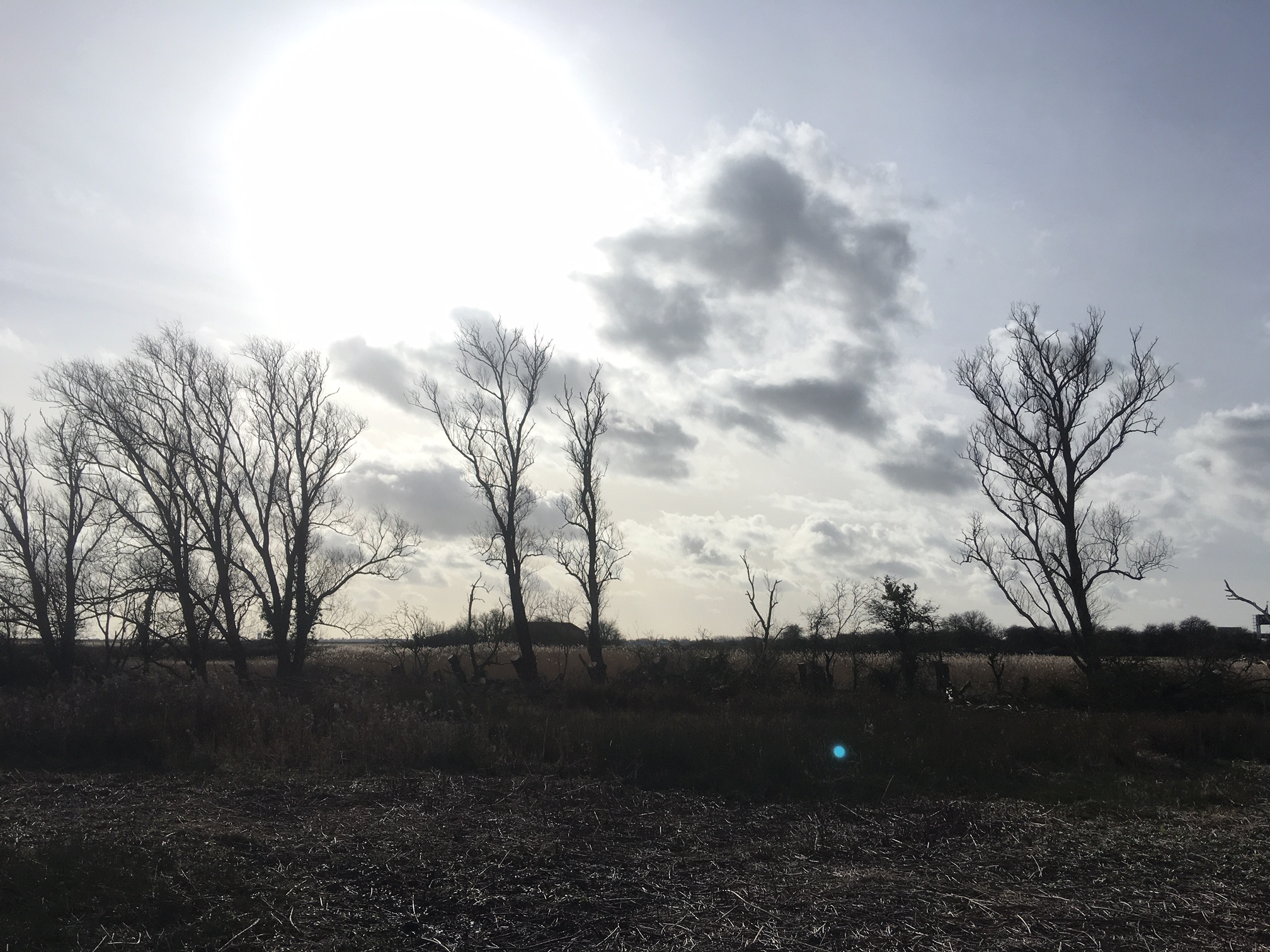
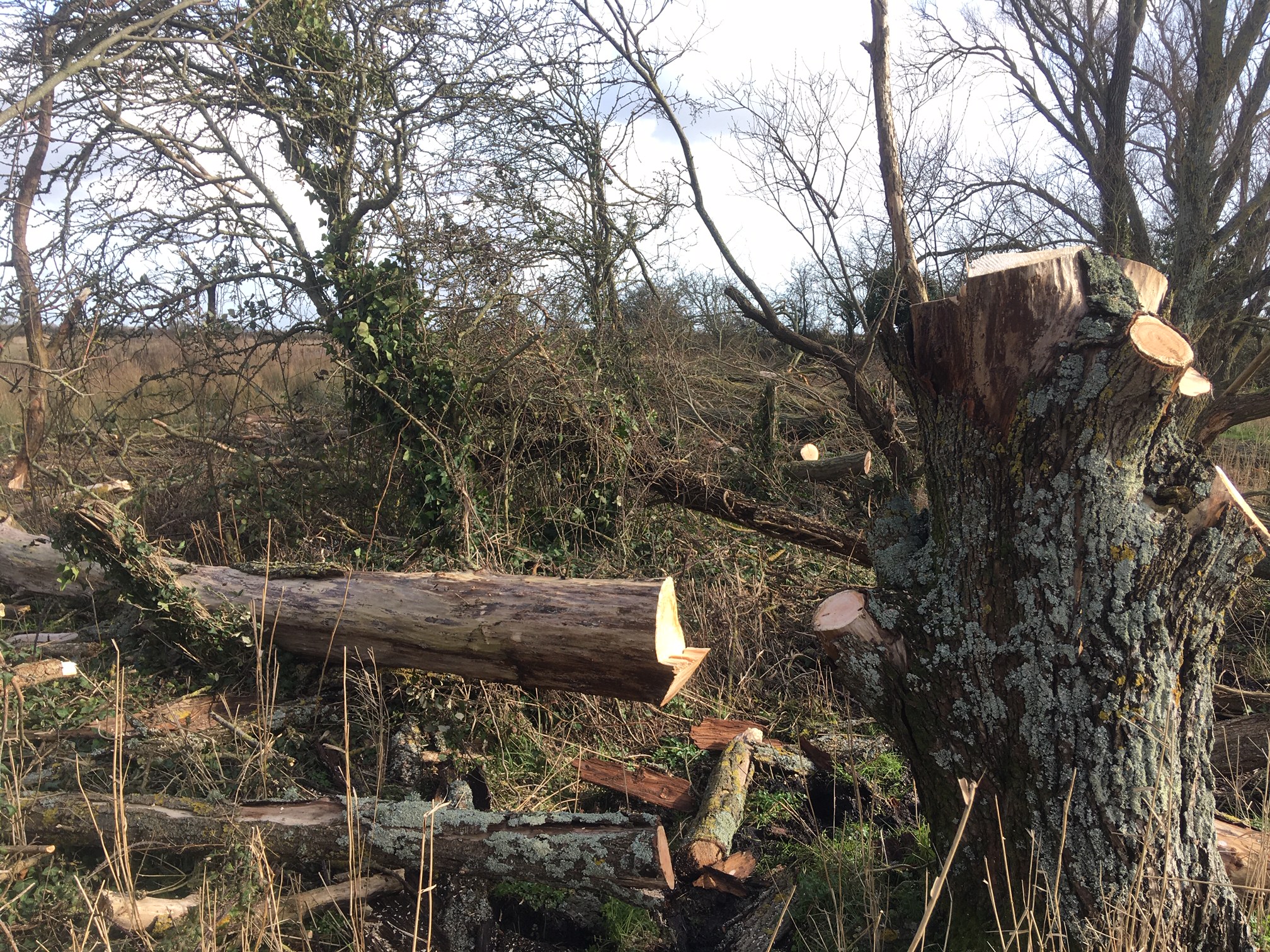 I’m excited by Mudlands. we’ve had no records of breeding waders here for a number of years and after a lot of scrub and rush removal, it is now looking particularly good for redshank.
I’m excited by Mudlands. we’ve had no records of breeding waders here for a number of years and after a lot of scrub and rush removal, it is now looking particularly good for redshank.